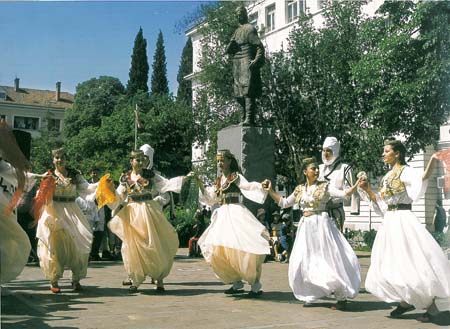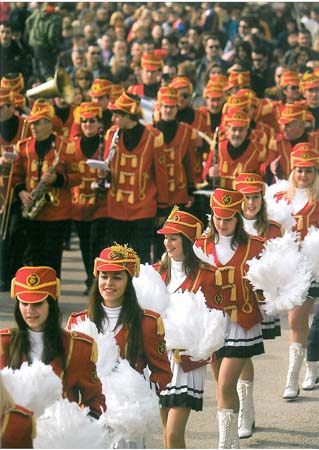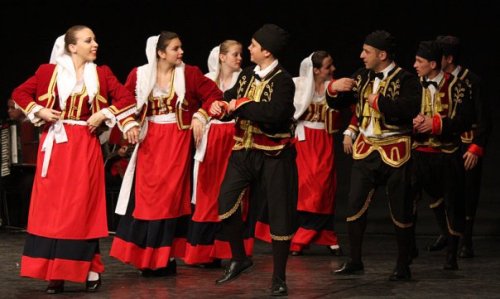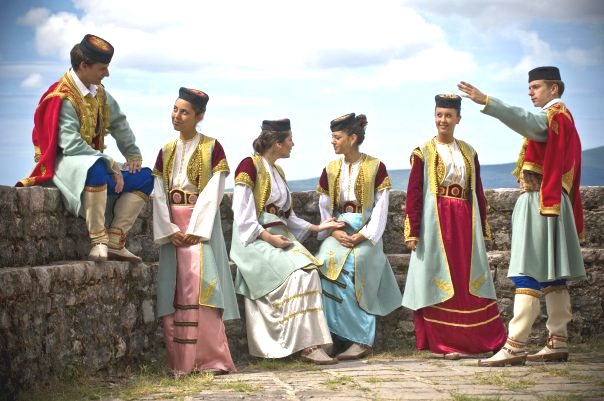The culture of present-day Montenegro has been shaped by a variety of influences throughout history:
the ancient Greece, ancient Rome, Christianity, Islam, Byzantine Empire, Bulgarian Empire,
Serbian Empire,
Ottoman Empire, Republic of Venice, Austria-Hungary and Yugoslavia.
 Oro Dance
Oro Dance
Montenegro has many significant cultural and historical sites, including heritage sites from the pre-Romanesque,
Gothic and Baroque periods. The most known religious monuments: the Cathedral of Saint Tryphon in Kotor,
the basilica of St. Luke (over 800 years), Our Lady of the Rocks, the Savina Monastery, Hussein-Pasha’s
Mosque
and others.
 February Feast of Mimosa
February Feast of Mimosa
The traditional folk dance of the Montenegrins is the Oro, a circle dance that involves dancers standing on each
other's shoulders in a circle while one or two dancers are dancing in the middle.

Montenegro's capital Podgorica and the former royal capital of Cetinje are the two most important centers of
culture and the arts in the country.
